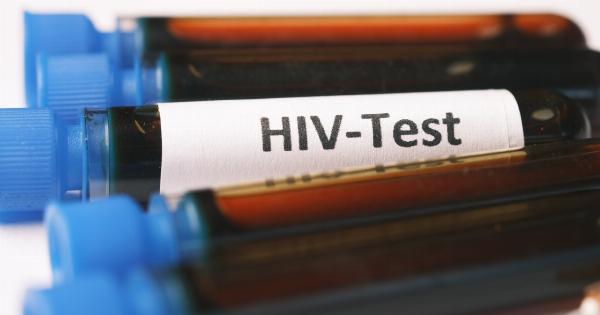The discovery of antiretroviral therapy (ART) revolutionized the treatment of HIV, providing hope to millions of individuals living with the virus.
However, one group that faced significant challenges in accessing this life-saving treatment was newborn babies infected with HIV. The delicate physiology and vulnerability of these infants posed unique difficulties in administering and managing the medication.
But with advancements in medical science and increased awareness, hope rises again for these little ones as innovative solutions are being developed to address the specific needs of HIV-positive babies.
Understanding the Challenge
When an HIV-positive mother gives birth, there is a risk of transmitting the virus to her child during pregnancy, childbirth, or breastfeeding. Without intervention, the transmission rate can be as high as 30%.
Previously, treating HIV in newborns proved to be extremely challenging due to the lack of suitable pediatric formulations and dosing strategies.
Improving HIV Diagnosis in Infants
An early and accurate diagnosis is crucial to determining the appropriate treatment for babies born with HIV.
Traditional methods of testing, such as antibody-based assays, may not be effective in detecting the virus in infants due to the presence of maternal antibodies. To address this challenge, new techniques like nucleic acid amplification tests (NAATs) have been developed to detect the virus directly in the infant’s blood.
Developing Age-Appropriate Antiretroviral Formulations
Historically, ART formulations were primarily designed for adults and older children. Administering these medications to infants often required crushing tablets or opening capsules, leading to imprecise dosing and potential side effects.
To overcome this barrier, pharmaceutical companies and researchers are now focusing on developing age-appropriate formulations, such as syrups and granules, to ensure accurate dosing without compromising the efficacy of the treatment.
Preventing Mother-to-Child Transmission
Prevention is always better than cure, and this mantra holds true for preventing mother-to-child transmission of HIV as well. Programs promoting prenatal care, HIV testing, and counseling have played a crucial role in reducing transmission rates.
Additionally, administering antiretrovirals to HIV-positive pregnant women during pregnancy and childbirth significantly reduces the risk of transmission to the baby.
Early Initiation of Antiretroviral Therapy
Studies have shown that starting HIV treatment as early as possible in infants yields better outcomes.
The World Health Organization (WHO) now recommends initiating ART in all infants diagnosed with HIV, irrespective of their immunological status, within the first six weeks of life. Early treatment not only improves the health of the baby but also reduces the risk of transmitting the virus to others.
Monitoring and Managing Treatment
Regular monitoring and management of HIV treatment are crucial for ensuring its effectiveness and safety in infants.
Pediatricians closely monitor viral load, immune system markers, and potential side effects to make adjustments in the treatment regimen as necessary. Additionally, caregiver education and support are essential for promoting adherence to medication and addressing any challenges or concerns that may arise.
The Role of Research
Continuous research plays a vital role in improving HIV treatment for babies. Scientists and healthcare professionals strive to uncover new insights and develop innovative interventions to further enhance the care and outcomes of HIV-positive infants.
From studying the pharmacokinetics of antiretrovirals in neonates to exploring novel drug delivery mechanisms, ongoing research efforts promise to push the boundaries of what is possible in combating HIV in babies.
Supportive Care and Psychosocial Assistance
While antiretroviral therapy forms the backbone of HIV treatment, it is equally important to address the holistic needs of HIV-positive infants.
Supportive care, including nutritional support, psychosocial assistance, and early intervention services, can significantly contribute to the overall well-being and development of these children. Collaborative efforts involving healthcare providers, social workers, and community support groups are crucial for providing comprehensive care to these vulnerable infants.
Global Commitment and Funding
Eliminating mother-to-child transmission of HIV and providing effective treatment to infected infants require a strong global commitment backed by adequate funding.
International organizations, governments, and philanthropic entities have been actively investing in initiatives aimed at improving access to HIV treatment and care for newborns. Sustainable funding models, equitable distribution of resources, and partnerships between stakeholders remain essential for driving progress in this critical area.
A Message of Hope
With the collective efforts of healthcare professionals, researchers, policymakers, and community organizations, hope rises again for the youngest victims of HIV.
Improved diagnostics, age-appropriate formulations, early initiation of treatment, and comprehensive care are transforming the outlook for HIV-positive infants. Through sustained commitment and innovation, we can envision a future where no baby is born with HIV and every child infected with the virus receives the care they need to lead healthy and fulfilling lives.





























